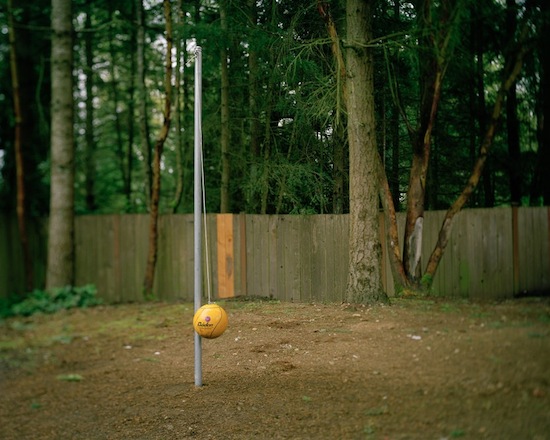
Image Credit: Stephen Chalmers
H/T: Lauren Gantz
Death is often in the news, whether it involves major singers, local Austin celebrities, or Twitter death hoaxes. Yet when we visualize death, it’s typically in memorials, not actual pictures of dead bodies. We’ve come some ways from the Victorian memento mori photographs which attempted to render the corpse vital and to serve, as Jamie Fraser notes, “as a keepsake to remember the deceased.” While traditional burial practices, which use embalming fluids to delay putrefaction and decomposition, likewise make the corpse appear as lifelike as possible, most people don’t make hair rings or take pictures of the dead to remember them. In this way, we remember the dead as not dead—as lively. In his photography series Unmarked, Stephen Chalmers presents an alternative way to represent death.

Image Credit: Stephen Chalmers
In a recent NPR article, Chalmers discusses Unmarked’s origins in a hiking trip that went past one of Ted Bundy’s dumpsites. As he says, “[J]ust that little kernel of information really changed how I felt about what was otherwise a really fantastic early date. I was struck by how my experience of this place was so changed by knowing the history of the location.” Thus, the series features the locations in which serial killers disposed of their victims’ bodies. Each photograph is named for the victim left in the place.

Image Credit: Stephen Chalmers
In photographs like the one above, Jennifer Joseph, Chalmers uses focus to direct the viewer’s attention to the specific place where the body once lay. The placid pastoral scene contrasts dramatically with the idea of violence that murder contains, but there is no dramatic visual tension in the photograph. As Chalmers tells NPR, “I kind of like the absence of spectacle. I’m a quiet person. I like for the images I make to be quiet.” The images are quiet in their lack of subjects and their rural backgrounds. The tetherball in Debra Estes hints at a more suburban setting, but the photo’s only dynamism occurs in the contrast of the yellow tetherball set against the browns and greens. However, Chalmers also explicitly states on his website that the images are meant not only to refuse “clichés of prefabricated sentimentality,” but also to “convey the original sense of shock at arriving at these sites of trauma and also that the self-conscious refusal of information and emptiness of the images and conveys our distance from this sense of shock to demonstrate the essential inaccessibility of these traumatic events and degrading deaths.” If the Victorian image is a “prefabricated sentimentality,” Unmarked works differently.

Image Credit: Stephen Chalmers
Unmarked represents death in this “absence of spectacle,” the still scenes set against the media circus surrounding serial killers and their victims. Because we cannot hope to either represent or fully comprehend the victims’ traumatic deaths, the only way to do so is through its visual opposite. However, while such a series seems deeply respectful of the victims, it only displays death in its lack of display. Chalmers’ visual logic suggests that the only true way to represent murder victims is by refusing to represent them—a treatment that is provocative and beautiful, but may only reinforce the victims’ absence. Where is the space in which mourners can represent the dead, between too much and too little presence? Is the only way our culture can show death is by unmarking it?
Comments
Representation after Auschwitz
A lovely post. You pose reverberating questions about representation and responsibility. These questions chime with the fierce and still lively debate about what possibilities remain for poetry after Auschwitz. I can recommend a long recent essay by Kathy Rugoff on poet Geoffrey Hill's engagement with this debate ("'Wild reasons of the state': Geoffrey Hill's Response to Adorno," _CEA Critic_ 73.2). When I read it I was immediately taken with the piece and hoped for an opportunity to discuss with Rugoff her work on Hill. In looking her up I learned, I grieved to learn, that she had died before the article reached print. --DDS
An interesting connection!
Dustin, thanks for the comment. I'll have to check the article out--I suppose all kinds of violent trauma put this question forward.